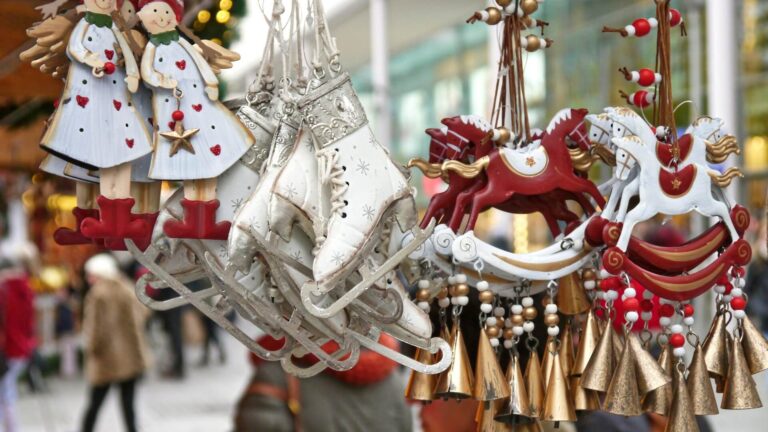
If you need a freelance travel writer or you would like to see your country, city, flight, etc., presented on the blog, drop me an email.
Find our more on Freelance Travel Writer page.
There is almost no person interested in Serbia who hasn’t heard about Guča and its famous Trumpet Festival. This same vibrant event inspired me to visit the area, even though it wasn’t “the right time.” This small town is bustling in August, but there are also plenty of things to do in Guča Serbia throughout the year.
FROM BELGRADE: about 170 km
FROM NIŠ: about 190 km
If you’re coming from Čačak, it’s just a 20 km drive to Guča; from Ivanjica, it’s 30 km, and from Kraljevo, it’s less than 50 km. Don’t get confused by the directions, as I was. (I was told to contact the Tourism Organization of Dragačevo, part of the Lučani municipality, but I was actually heading to Guča!)
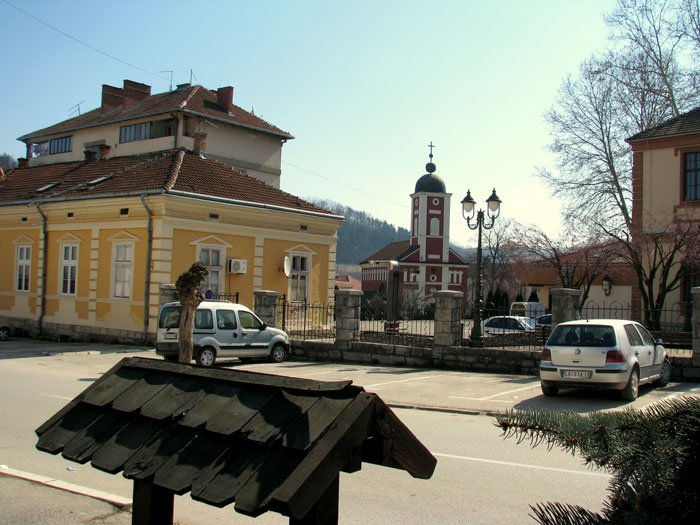
Guča Serbia Trumpet Festival
The famous festival draws around half a million tourists each year. Thanks to its long-standing brass band tradition, Guča is considered the capital of the trumpet. The very first Trumpet Festival was held in 1961 near the local St. Archangel Gabriel Church, attracting over 10,000 visitors. Desimir Perišić won the inaugural prize back then.
The highlight of the festival is the brass band competition, which begins with the same melody that’s been played for nearly six decades. The main attractions include the trumpet parade, the improvised traditional wedding, and numerous concerts held during the event.

When you visit Guča, as I did “at the wrong time,” during spring when summer is still just a notion (the Trumpet Festival takes place in August), you might think you’ll miss the trumpets altogether. Nevertheless, as you approach the town, you’ll notice a monument of Desimir Perišić, the first winner, holding a trumpet in his hands. A few more minutes drive will take you to the very center, where a statue of a trumpet player graces the main square. Turning left from there, you’ll find the Trumpet Museum.
No confusion there—it’s clear where you are!

In front of the museum is a sculpture fountain decorated with, naturally, trumpets. The elegant beige building houses the main exhibition dedicated to the Trumpet Festival. Here, you can learn about local customs, delve into the history of the festival and its origins, and admire some of the iconic trumpets used over the decades. Rade from the Tourism Organization gave me a tour, allowing me to capture a few video clips with authentic trumpet music in the background—a sound that’s become more than just a trademark of Guča Serbia.
Across the street from the museum is the Cultural and Sports Center, the main organizer of the festival. This complex, which also includes a cinema and library, is home to the Dragačevo Tourism Organization office.
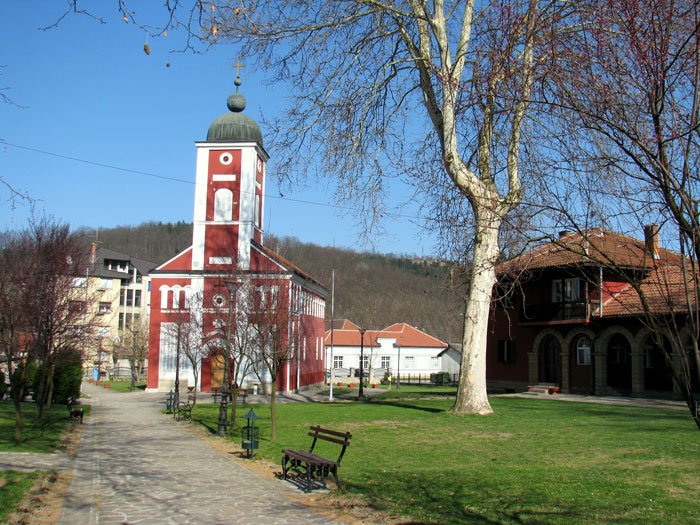
Among the other things to do in Guča Serbia, you should visit the St. Archangel Gabriel Church. Dating back to the 18th century, the church was funded by the former Serbian ruler Miloš Obrenović, who donated “1,000 groats” for its construction. Its striking red façade stands out in the landscape. (I later returned to Guča in the summer, enjoyed a drink with Rade, and saw the town in full bloom when everything was lush and green. Here is also the post about West Serbia Places to Visit when I later visited with a group of colleagues.)
The church courtyard is also worth exploring. Here, you’ll find a few blue-painted tombstones and roadside monuments, though a separate Lapidarium located nearby houses additional artifacts. This peaceful courtyard is a perfect place to take a break in the shade before stepping through the heavy iron gate back to the trumpet player statue. If you need refreshments (or, as in my case, a place with Wi-Fi to get some work done), there are several cafés on both sides of the street.
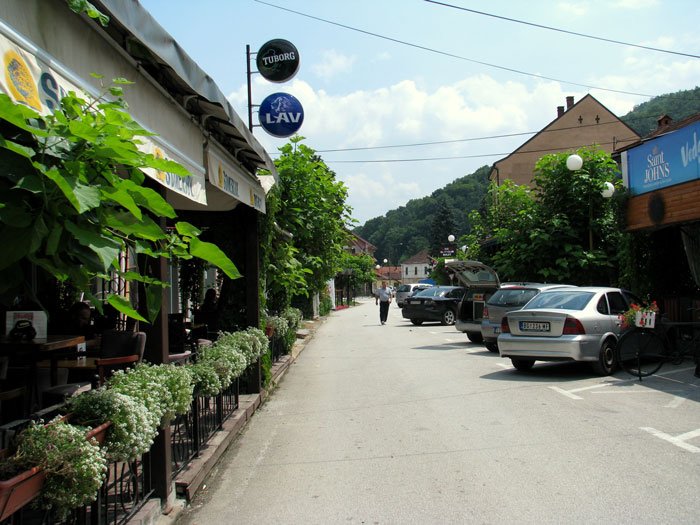
The Lapidarium is just a couple of minutes away and features 33 tombstones and roadside monuments, some dating back to the 19th century.
I visited Guča on a quiet weekend when the whole town felt serene. Even the nearby school was empty. The monuments seemed all the more mysterious under the shade of the surrounding trees. Their inscriptions and carved faces were captivating. Some were adorned with leaves and flowers, while others, of course, featured trumpets.
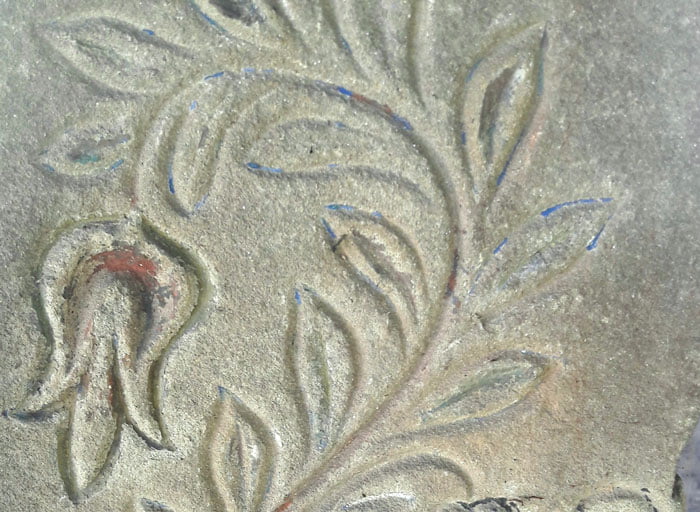
Dragačevo and Lučani
Dragačevo is a valley in western Serbia, nestled between three mountains: Ovčar, Jelica, and Čemerno. It spans 661 square kilometers, with two-thirds of its area under the jurisdiction of the Lučani municipality. The primary tourist attraction here is, undoubtedly, Guča Serbia.
The small town of Lučani is situated on the banks of the Bjelica River. According to the latest census, its population stands at 3,888. The town was first mentioned in Turkish records in 1476, and its name likely originates from street torches once used to illuminate the settlement.
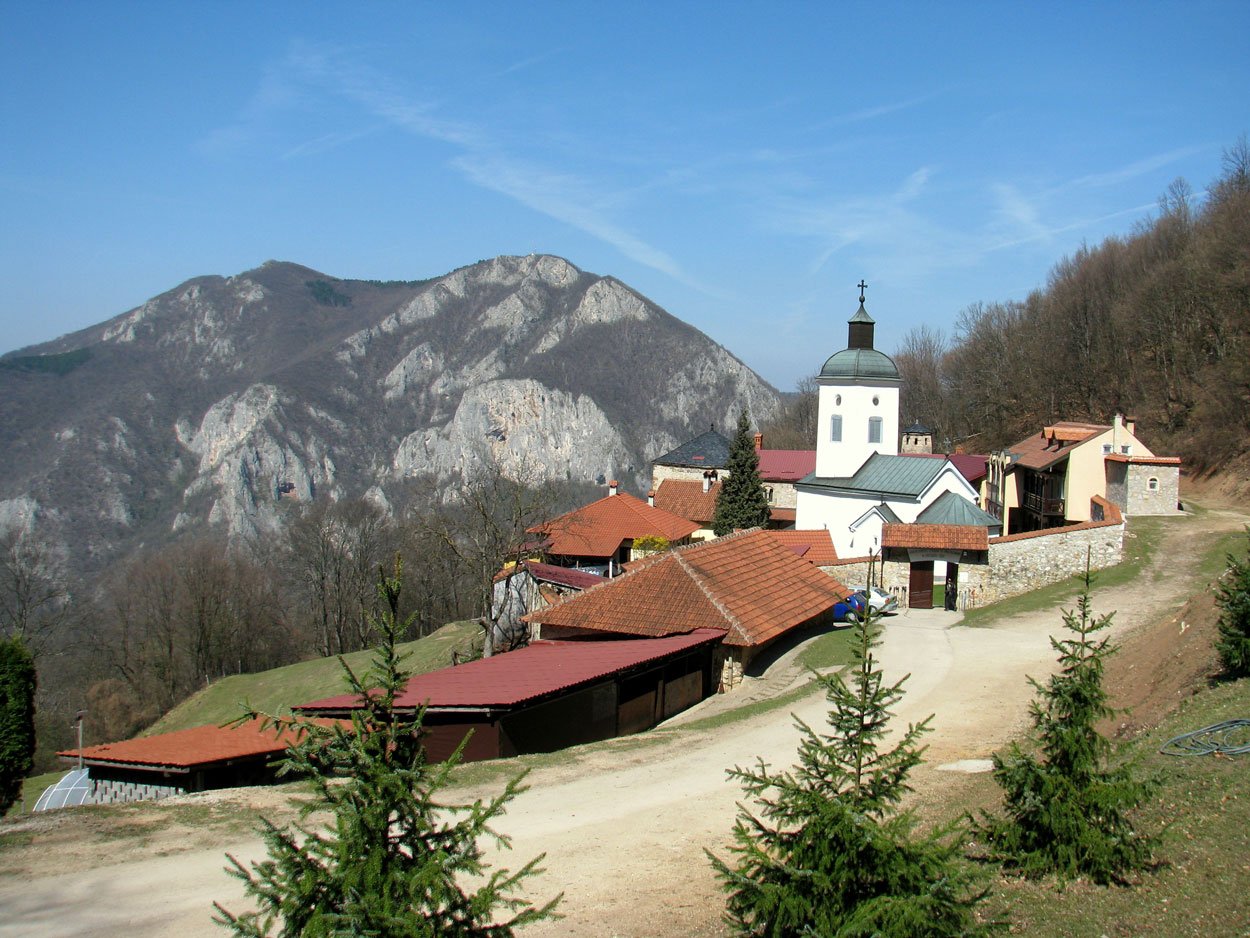
The rivers Bjelica and Zapadna Morava flow through the Dragačevo valley. Having previously visited Čačak, Kablar, and the opposite bank of the Zapadna Morava (see the post about Things to do in Čačak), this time I set out to climb Ovčar Mountain on this side of the river.
Driving through the valley, surrounded by breathtaking views, Rade informs me that we have 20 more kilometers to go before reaching two medieval monasteries—St. Trojice and Sretenje. Known as the “Serbian Mount Athos,” the Ovčar-Kablar Gorge is a must-visit for anyone exploring Guča Serbia.
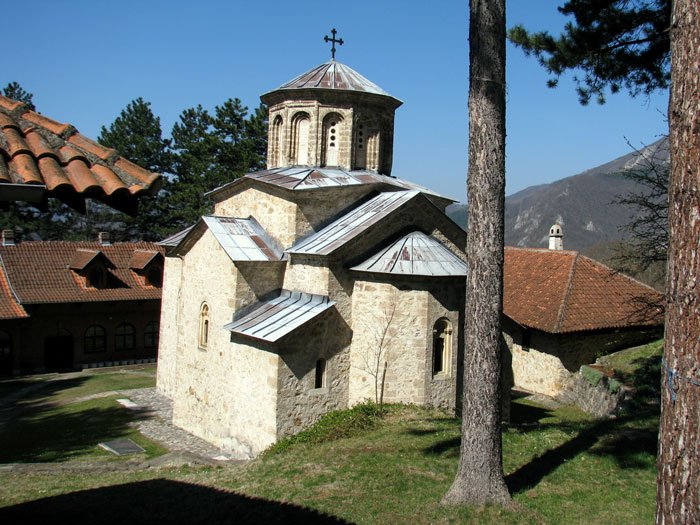
They say the St. Trojice Monastery is one of the most beautiful in the gorge. The road winds up into the hills, but until the 1980s, there wasn’t even a road here. It’s astounding to think how inaccessible this place must have been centuries ago when monks established the 10 medieval monasteries scattered across the gorge.
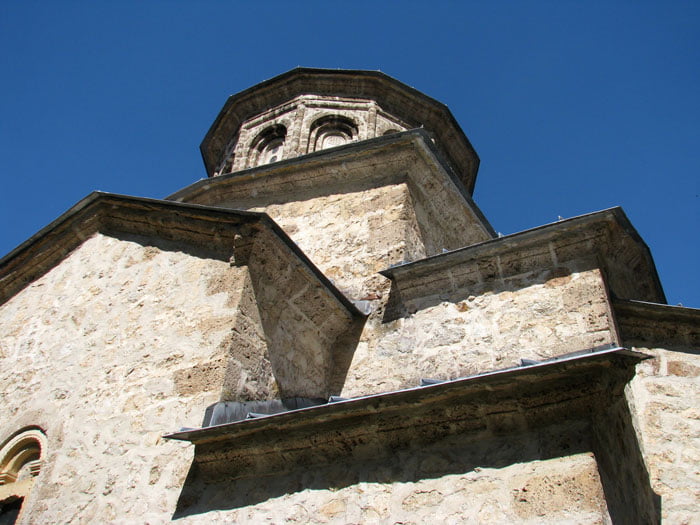
One of the monks greets us at the gate, alongside a group of tourists from Bosnia and Herzegovina. Today, three monks and two elderly nuns reside here. Built in the 16th century, St. Trojice has been restored multiple times but has never been frescoed, as the monk explained when I asked about the interior.
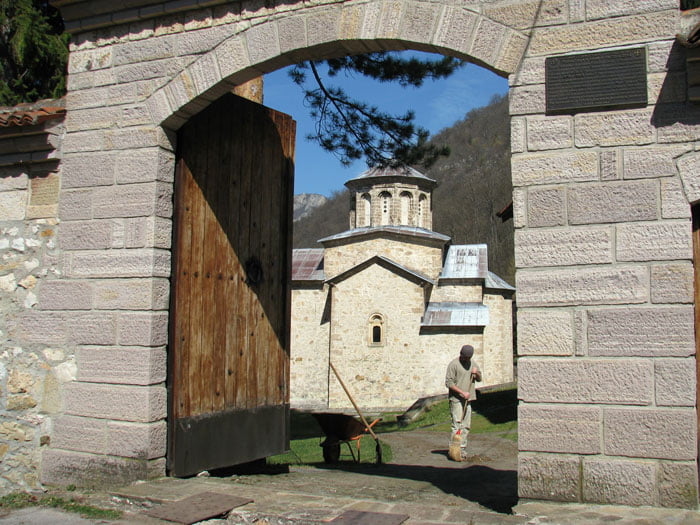
Rade patiently waited as I wandered the courtyard, taking photos, before we headed to the Sretenje Monastery. This female monastery, home to about 20 nuns, is perched on a mountain cliff surrounded by lush forests, offering stunning views of the opposing Kablar Mountain.
I snapped as many pictures as I could, climbing up and down the hill, squatting and contorting myself to get the perfect shot—much to Rade’s amusement as he captured my antics with his camera. The complex features a charming white church and a wooden terrace encircling the courtyard. One of the nuns kindly invited us to sit and rest, serving coffee and a delightful cherry cake.
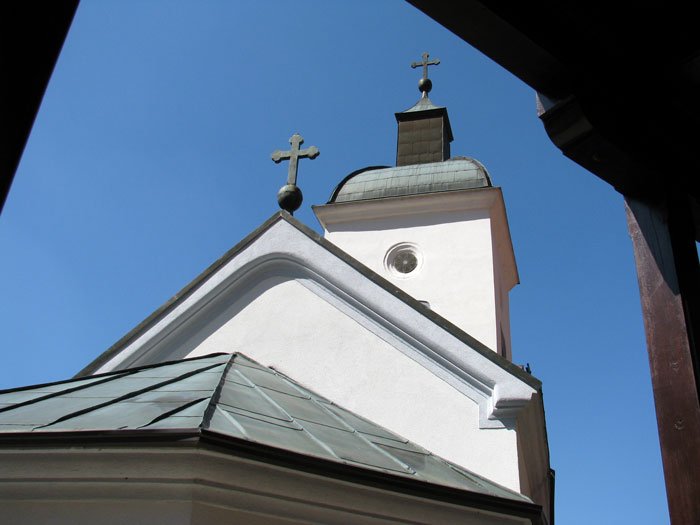
At the same table sat a young couple with a baby, their rosy cheeks evidence of the climb. They shared how they’d left their car at the base of the mountain, thinking the monastery couldn’t be far.
“I kept telling myself, ‘It has to be just around this turn!’—over and over,” the young mother confessed, laughing about how much harder the climb was than expected. It took them hours to reach the top.
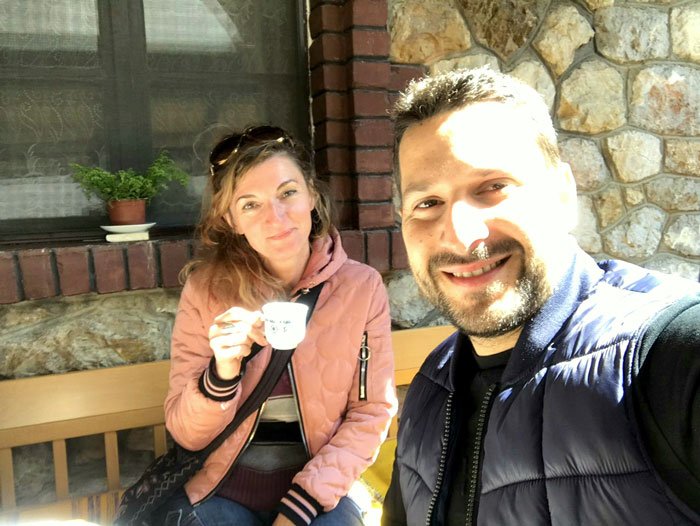
Rade was showing me the photos – there I was, with my hair all messed up, trying to get another good shot from an impossible angle. As we laughed, savoring some more of that delicious cake, a group of mountaineers slowly stood up on our left. They had climbed up here, rested a bit at the monastery, and were now off to conquer the highest peak of Ovčar. Meanwhile, that young couple was still seated on the opposite side of our table… One can’t help but blush when leaving the parking lot. But this wasn’t the same blush caused by the exertion written all over the rosy cheeks of the other monastery visitors that day.

On our way back, we were advised to stop by the village of Milatovići, where our host, Vladimir, produces rakija, Serbia’s national drink. His version, called Dragačevka Zlatna, is made with 30 percent old varieties of plums. Given that his family has been growing plums and making rakija for over 150 years, it’s no surprise Vladimir decided to start producing Dragačevka commercially seven years ago. As he showed us around, explaining that most of his rakija is sold online, his wife brought out an assortment of traditional dishes.
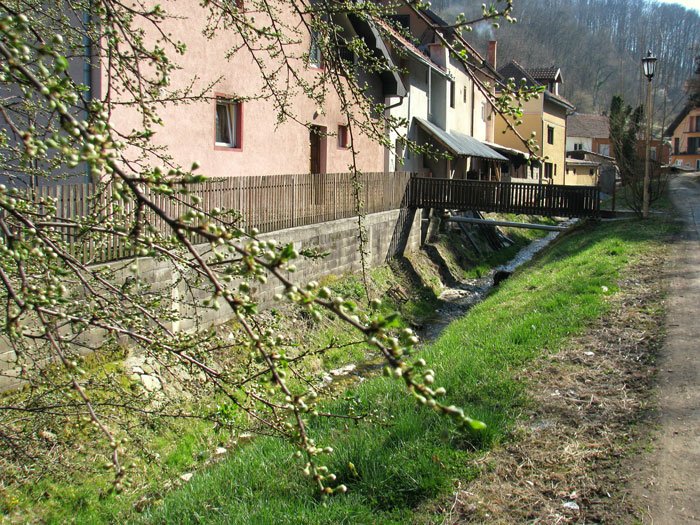
At the same table was the owner of the “Broćića Avlija” restaurant, a charming establishment offering traditional food and accommodation in Guča Serbia. According to the website I was referred to, the family bought old cottages from surrounding villages, relocated them to Guča, and opened a small settlement for guests.
Near Guča, you’ll find Vučkovica Lake, which has been growing in popularity in recent years and is the source of stunning photos popping up on social media.
Speaking of traditional accommodation, I was a bit surprised to be recommended to stay 8 km away from Guča in the village of Gornja Kravarica. The drive there in the dark, winding up hills and along sharp curves, was a bit challenging. Still, when I woke up to find a warm, crusty bun with pršuta in the kitchen, alongside steaming kačamak topped with kajmak, everything made perfect sense! The complex, called Vajati, is owned by the Radičević family, who have built numerous accommodation houses complemented by a restaurant, swimming pool, and other facilities. They produce their own kajmak, white cheese, and a variety of fruit juices, including raspberry, currant, blueberry, and strawberry. Over breakfast, my host Vladan told me that they opened the complex in 2006, even though the proper road to the village wasn’t built until 2017. The capacity is 30 beds, and the season kicks off in May.
When you arrive in Guča, you can choose whether you’d prefer to stay closer to the center or in the surrounding villages. Here’s a link where you can find the accommodation that best suits your needs. Keep in mind that during the Trumpet Festival (Sabor Trubača in Serbian), everything is fully booked, so you need to plan your accommodation, parking, etc., well in advance.

The next morning, I drove down to Guča, aiming to get some work done in one of the cafés. Rade brought me a T-shirt with the inscription “Guča rules”. Across the street, I noticed another café named “Hemingway”…
This instantly reminded me of my trip to Havana, years ago, when I was rushing around trying to follow in the footsteps of Ernest Hemingway in Cuba. It also brought back memories of things to do in Ronda, Spain, the town I loved, where Hemingway was a regular guest. And here I was again, stumbling upon his name—this time in Serbia, in the heart of Guča!
Next from Serbia: SJENICA SERBIA & PEŠTER VALLEY
The full THINGS TO DO IN SERBIA section
PIN IT FOR LATER:
If you need a freelance travel writer or you would like to see your country, city, flight, etc., presented on the blog, drop me an email.
Find our more on Freelance Travel Writer page.
I am looking forward to working with you.
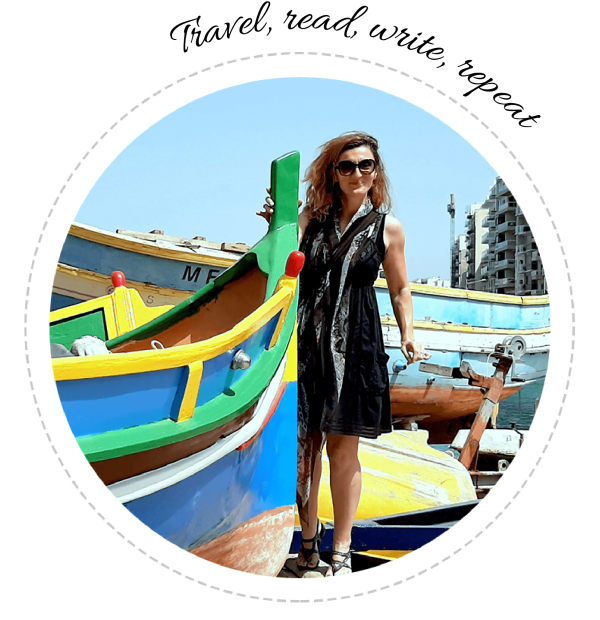



14 responses
This sounds like so much fun. Love how you posted those silly photos of yours. ???? That is what I love about your articles, I always get the exact atmosphere. One can almost relive your trip. ???? I would love to see that Sretenje monastery in person, looks stunning.
Thank you, so glad you enjoy my posts. I always try to write about the place in accordance with my experience. Otherwise, it’s just another copy-paste text with nothing genuine about it. And to tell you the truth comments like yours give me the additional boost, so thanks again. <3
What a wonderful trip. These are such great ideas! I’d love to see the view from Ovcar Mountain, and the traditional Serbian breakfast looks delicious.
I’m sure you’d love the view. And don’t let me even start about the Serbian food. 😛
Wow! The trumpet festival sounds amazing!! Thanks for sharing. 🙂
You can find more info online or through the Dragacevo Tourism Organization linked in the post. The festival is the one to remember! 🙂
The scenery around Serbia is beautiful. One of the experiences on my bucket list is to do a motorcycle tour around this part of the world, including the Entire Adriatic Coast.
That would be amazing! The scenery in Serbia is stunning with some great natural surroundings. Let me know when you decide to go, would love to hear your impression. 🙂
I have not yet had a chance to visit serbia, nor have I heard of the Trumpet festival. but holy cow, is Guca gorgeous! The amazing architecture, the lush landscape, and the delicious food! (Also, not sure why my comment will only type in title case…)
Thanks, so glad it made you want to see it for yourself. 🙂
(Not sure about the title case either, it happens sometimes when one tries to comment with iPhones.)
It sounds like you had quite finding your way to your destination, but it was worth it. I would love to try the plum drink and also have hosts who are a nun and monk.
A monastery visit is surely a special event. You feel so welcomed and it even gives a feel of serenity.
What a wonderful post to read right now! I’m stuck at Home and Your detailed descriptions of your experience took me away to a beautiful Unique Place that I would love to visit some day. Your photos of the people and scenery Really made me feel like I was there with you. The Breakfast Photo made me hungry Too.
Thank you, so glad you enjoyed the post.
Well, I’m at home now as well. But it’s great to remember these lovely trips. That’s the thing I love about blogging, it all stays alive long after I finish the journey. 🙂